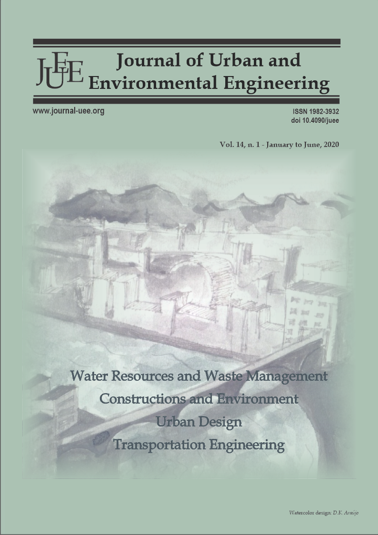EVALUATION OF FUTURE CLIMATE CHANGE SCENARIOS IN URBAN HEAT ISLAND AND ITS NEIGHBORHOOD USING DYNAMICAL DOWNSCALING
DOI:
https://doi.org/10.4090/juee.2020.v14n1.110-118Abstract
According to IPCC reports, global climate change is likely to be accompanied by a greater frequency, intensity, and duration of heat waves in urban areas. This is related to predicted and ongoing variation of atmospheric temperature and its association with the dynamical evolution of cities. Changes in the roughness pattern of the surface, wind intensity, soil available humidity and radiative properties compared to the natural surfaces characterize the formation of the Urban Heat Island (UHI). A dynamical downscaling of A2 and B1 SRES’s future scenarios from Intergovernmental Panel on Climate Change were performed for Londrina, a medium-size city of Southern Brazil, using the Weather Research and Forecasting model. The main objective of this study is to investigate the impact of these scenarios on the UHI formation and intensity based on different input data, and its role and influence in the rural area. For this, an evaluation of the model and a comparison with the scenarios were done to mitigate the current trends. The results show a tendency in the current situation in following the pessimistic A2 scenario. Also, a drier rural area for the sustainable projection (B1) is found which implicates in a higher temperature and wind patterns modification for both sites, urban and rural region. Both future projections have a direct influence on the UHI intensity and formation, yielding effects in the agriculture and affecting conditions on human comfort over the region.Downloads
Download data is not yet available.
Downloads
Published
2020-06-07
Issue
Section
Articles




